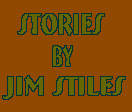

WHAT WE SAW IN THE MIRROR
I had absolutely no idea what kind of response to expect from the last issue ("It's Time to Look in the Mirror"). I have worn the "enviro" label for almost 25 years and still do, but wondered if I'd be called a turncoat by some and an apologist by others. It occurred to me that, at long last, I may have finally made everybody mad. It worried me.
But, instead, I was surprised and gratified, not only by the volume of the comments, but by their overwhelmingly honest, self-scrutinizing and non-partisan tone. I feel as if maybe we struck a chord with a lot of people and I'm hoping the dialogue that the Mirror Issue created will be sustaining and even expanding. At least it's a good start.
The number of letters and emails I received here was unprecedented and as a result, this is "The Feedback Issue." I have printed as many of the letters as I could squeeze into six pages. Some comments (and almost all those received after May 10) would simply not fit, but I hope we can include many of them in future Feedback pages. I did print all letters and comments that seriously challenged the premise of the Mirror issue--that environmentalists and non-motorized recreationists bear a growing responsibility for ever-increasing impacts on wildlands in the West. Surprisingly there was only one such dissenting voice, from Tori Woodard in Escalante, Utah, who flatly stated, "I don't agree that environmentalists are part of 'the problem.'" Her 1100 word letter leads off the Feedback section on page 34.
At the other end of the spectrum, comments by Deseret News columnist Lee Benson were disappointing. Bensen devoted his entire May 9 column to The Zephyr's Mirror Issue, but instead of reading it in the spirit in which it was offered, Benson's smug and gleeful reaction regrettably smacked of ignorance and arrogance. "I have to admit, I'm sort of enjoying this," he crowed. I got the impression Benson felt he'd been taken "off the hook," that an admission of our own guilt somehow gave him and his ilk permission to continue their own reckless abuses of the land. Well, that's not what I intended.
(You see, Mr. Benson, I was hoping that maybe we could all be honest for 30 minutes. I decided to take the risk of "going first" and hoped that people like you might be motivated to do likewise.)
Honest disagreement, however, which I believe does characterize Ms. Woodard at least, is a part of the process and so I think the discussion has been very productive.
That does not mean, however, that I think we're on the brink of a breakthrough; the fact that neither of the "organized" sides of this argument chose to comment officially on the issue was telling. I had hoped I might see letters from the Southern Utah Land Users (SULU) and from the Southern Utah Wilderness Alliance (SUWA) in Feedback, and their voices are sorely missed (although SUWA director Larry Young did leave a fairly positive and supportive phone message).
Out of all this discussion, I am beginning to perceive a difference among "environmentalists" in the way we view the Rural West and a difference in the way we think it needs to be saved. For lack of a better label, I think there are among us, urban environmentalists and rural environmentalists. The labels aren't intended to designate a person's geographic location as much as their broader view of the West's future. And the differences are striking.
My impression is that urban enviros are dedicated to preserving the resources of the West at all costs. The physical degradation of the land is their paramount concern and all their efforts are aimed in that direction. It is a very well-defined and delineated, but I think very narrowly-focused approach. I have often heard comments from some of my enviro buddies that they really don't care what happens to the small towns out here, that there's nothing that can be done anyway, and that they have devoted themselves to saving the lands that lie outside those boundaries.
But in the long run, how is that possible? Also Leopold once made the observation, "We abuse land because we regard it as a commodity belonging to us. When we see land as a community to which we belong, we may begin to use it with love and respect." If we acknowledge that we have contributed to the urbanization of rural communities, how can we draw a line between them and the lands outside that circle?
Among urban enviros' greatest concerns is public lands ranching and any of us who have seen the effects of overgrazing know how damaging to the land abusive range management can be. But sometimes "environmentalists'" solutions seem a bit short-sighted to me. Ms. Woodard's idea that "ranchettes" are an improvement over ranches with all their inherent detractions is a valid notion, only if we look at the West's future in the short-term.
Thinking about the overgrazed regions of the West, I found myself remembering one of Ed Abbey's more memorable descriptions of the currently flooded Glen Canyon that lies beneath the waters of Lake Powell. Abbey, taking the long and optimistic view, said that Glen Canyon was still there--it was simply in "liquid storage." He was confident that someday the ramparts of his most beloved canyon would rise again as the reservoir waters fell. I think he's right.
Can't the same thing be said of our overgrazed wide-open spaces? Can't the argument be fairly made that cattle ranges are, likewise, in "dry storage?"
For example, take a parcel of state land like some of the "packages" currently being offered for sale and development by the Utah State Trust Lands people. Leave those parcels as they are, and allow cattle to roam as they have, and thirty years from now, the land will still be wide-open and overgrazed.
But allow the development proposals to proceed, proposals that are receiving little or no opposition from main stream environmental groups in Utah, and compare the results in the longterm. Thirty years from now, we'll have massive development of that land, with dozens, perhaps hundreds of permanent structures, and with comparable increases in human population and demands for services. That's just one parcel of land.
So which is worse? Open lands with cows? Or developed, constructed lands?
And here is where we separate the rural from the urban enviros. There's no getting around the fact--I am a rural environmentalist. To me saving the West means more than just protecting the resource because the West is more than the sum of its parts. It is the Great Intangibles of the West that mean so much to so many of us and we're not willing to see them lost...not yet. The solitude. The emptiness. The silence. The lonely grandeur of the place. The Mystery...they are as much a part of the West as a gnarled juniper or a claret cup cactus, but not as easy to quantify.
I think, in many cases, the life of urban enviros, when they do live in cities, is so chaotic and hellish, that it simply doesn't take as much to please them when they are able to escape those pest holes and come to relatively quiet spots like Moab. A friend of mine just moved here from Salt Lake City; in fact, he arrived a week before Jeep Safari and I asked him how he liked Life in Moab.
"Wonderful," he said. "What a relief from the Wasatch Front." April Madness had barely registered on his screen, yet, to those of us who have spent long years here, Jeep Safari is almost intolerable.
Compared to the cities, life in the Rural West is pretty quiet, and so they don't realize what's being lost before their very eyes.
Many of us are prepared to take that long view--that the West's open spaces are critical to its preservation. I'd like to be able to do anything I can to maintain that openness, even if it means living with the cows for a while.
Whether you support ranching in the West or just tolerate it, a basic understanding of economics suggests that public lands ranching in the West is not going to be a viable business in the decades to come. It's a tough life for the money made and frankly, I don't see many of the sons and daughters of today's ranchers wanting to work that hard.
But many of us would like to find a way for the farmers and ranchers to maintain their lands and keep them development-free. Whether it means developing alternative crops, making their cattle operations more efficient and more environmentally responsible, or making sure they all have an opportunity to be compensated fairly for their development rights, we don't want to see the Rural West urbanized and its population tripled.
(The October/November issue will address the population threat. Interested writers on this subject should contact me soon..JS)
Meanwhile, we need to support the efforts of those who are trying to maintain open spaces. I have always admired and supported the work of The Nature Conservancy; saving the Dugout Ranch from possible development was a great and honorable achievement. But lately, I've heard some criticism of TNC by other environmental groups who believe the organization is too cow-friendly. The Conservancy has been criticized for not retiring public lands grazing permits. To me, TNC is like the little Dutch Boy with his thumb in the dike. Keeping that land open means everything and they should be applauded for their strategy, not criticized for it.
Finally, the notion that urban development of ranches will permanently benefit wildlife and the land is a notion that is just too ridiculous to take seriously, if it weren't for the fact that some people do. Again, in the short-term, one might be able to make the argument that a well-planned, low-density development is an improvement over a redneck rancher with an itchy trigger finger. But show me someplace--anyplace--where development was controlled and managed and didn't become a voracious monster in its own right. Ultimately, the greatest threat to wildlife in America today is loss of habitat to urban growth.
Maybe I'm just not dealing with Reality very well. It may be that the Rural West's future has already been scripted and we're just waiting for all the players to arrive--the teeming millions of urban Americans who want to escape the cites and be a part of the Western landscape. When they all arrive, however, it won't be the landscape they thought they were coming to, because they will have all arrived at once. And there may be a day, when all those latter day pilgrims will look back fondly and tearfully on the early and (relatively) quiet times of the early 21st Century and recall them as The Good Old Days...
They'll never know what they really missed.
IS IT TIME FOR MAHBU?
But I'm not ready to throw in the towel yet. I still think there's a fighting chance to hold on to at least a part of the Rural West. But as we've made clear in these two issues, it's going to require some honest conversation with a lot of different people. Very different people.
Several months ago, I found myself engaged in a terific conversation with two of my best buddies, legendary river runner/troublemaker Ken Sleight, and the always entertaining, the 21st Century's fast-speed version of the Energizer Bunny, Dr. Richard Ingebretsen, president of the Glen Canyon Institute.
In some ways, we are an unlikely trio. At 71, Ken is the senior member of this group. He grew up Mormon and poor on an Idaho ranch during the Depression. He was fighting dams on the Colorado River before Rich and I even knew it was there to defend. Ken grew up to be a jack mormon, but still stays close to his pioneer roots.
Dr. Rich is a devout member of the Latter Day Saints and watches me curiously when I drink coffee at the Moab Diner. "Gee," he says earnestly, "I've always wondered what that tastes like...it sure smells good."
"Want a swig?" I'll ask.
And Ingebretsen chuckles and orders up a chocolate malt with extra whipped cream. I try to tell him that all that sugar and fat would go easier on his arterial walls if he washed it down with some red wine and he grins some more.
Sleight drinks coffee and has been known to add a "little something" to his java and he'll tell you he does it for his health. It seems to be working so far.
As for me, well, I'm the lost cause from the Get-Go in this club, I suppose. I bank heavily on a few kind words from Ingebretsen and my Texas preacher pal, Pastor Don Falke to get me through the Pearly Gates--I sure won't make it on my own. I mean, what if Heaven is guarded by charter members of the Chamber of Commerce?
So there we sat, the Unholy Trio, discussing the uncertain future of our Colorado Plateau. Now I would like to propose that we organize, in as loose an interpretation of the word as can be found, and combine forces to create a new "group." Not an environmental group, not an anti-environmental group, but just a group.
I want to call us: Mormons & Heathens for a Better Utah (M.A.H.B.U). Rich is the Mormon. I'm the Heathen. Ken is the Mormon/Heathen. Our one goal? Let's talk.
MAHBU would have NO membership rolls, dues, meetings, minutes, bylaws, corollaries to bylaws, exceptions to corollaries to bylaws, uniform codes, or fines for improper conduct.
We exist to talk, over coffee or not over coffee. With a little something extra in it or not. The only requirement is that when we talk, we ALL have to tell the truth.
Pretty scary, eh?
So that's it. I mentioned this to Sleight and I think he agreed but he'd been taking tourists on trail rides all day and was worn out and I think he had something extra in his coffee. As for Ingebretsen, he apparently is moving faster than the speed of light again and my phone calls haven't caught up with his pager. So I can't hold him to this idea. At least not yet.
But I have high hopes for MAHBU--it just may be an idea whose time has come.
MISSING ON PAGE 6...
Because of space limitations, "New West Blues" is missing from this issue. It will be back in August with the Return of Ren Man!







